
Research Coordinator, Minds, Experiences, and Language Lab in Graduate School of Education, Stanford, California, United States
The Stanford Graduate School of Education (GSE) seeks a full-time Research Coordinator (acting lab manager) to help launch and coordinate the Minds,.....
I’m hiring!! 🎉 Looking for a full-time Lab Manager to help launch the Minds, Experiences, and Language Lab at Stanford. We’ll use all-day language recording, eye tracking, & neuroimaging to study how kids & families navigate unequal structural constraints. Please share:
phxc1b.rfer.us/STANFORDWcqUYo
15.09.2025 18:57 — 👍 72 🔁 48 💬 2 📌 0
Finally, thank you to the participants and their families that made this work possible! 🧠
13.09.2025 22:08 — 👍 1 🔁 0 💬 0 📌 0
This work was a major undertaking and wouldn't have come to fruition without support from several incredible scientists incl. W Foran, @finncalabro.bsky.social, @valeriejsydnor.bsky.social, D Petrie, A Parr, A Famalette, N Phang, A Sista, S Sorrells, and B Luna et al. at the @lncdpitt.bsky.social
13.09.2025 22:08 — 👍 2 🔁 0 💬 1 📌 0
Together, this work helps us understand how the human amygdala functionally develops to support affective + cognitive control. Future work is needed to extend these findings into clinical populations + identify developmental periods during which interventions may be most efficacious. 18/18
13.09.2025 22:08 — 👍 0 🔁 0 💬 1 📌 0
When plotting psychological term correlations by age, we noticed developmental divergences, such that earlier in development, terms were similarly associated across amygdala nuclei. Later, however, they increasingly diverged, suggesting potential functional specialization through development. 17/18
13.09.2025 22:08 — 👍 0 🔁 0 💬 1 📌 0
As one may expect, the terms w/ the strongest correlations across all nuclei were 'fear,' 'emotion,' and 'anxiety.' Interestingly, 'salience' and 'valence' were most related to the BLA, while 'reinforcement learning' and 'reward anticipation' were most strongly linked to the central amygdala. 16/18
13.09.2025 22:08 — 👍 0 🔁 0 💬 1 📌 0
We also used a meta-analytic technique (via Neurosynth) to decode cortical connectivity patterns in our data to identify the psychological processes previous neuroimaging studies had associated with structures we found to be most strongly connected to our amygdala nuclei. 15/18
13.09.2025 22:08 — 👍 0 🔁 0 💬 1 📌 0
Beyond age effects, stronger connectivity between the corticioamygdaloid transition area and ACC was primarily related to more socioemotional dysregulation and worse cognitive performance. 14/18
13.09.2025 22:08 — 👍 0 🔁 0 💬 1 📌 0
Finally, the superficial amygdala has been linked to olfaction (e.g., chemoreception) and social processes, like mating + aggression. We found connectivity b/w the superficial amygdala (i.e., corticoamygdaloid transition area) + anterior cingulate cortex (ACC) to be particularly protracted. 13/18
13.09.2025 22:08 — 👍 0 🔁 0 💬 1 📌 0
We expected central amygdala connectivity to peak in late adolescence, given that's when risk-taking often peaks. Central amygdala coupling w/ ventral portions of the PFC peaked in late adolescence, and stronger connectivity was related to faster behavioral performance and less internalizing. 12/18
13.09.2025 22:08 — 👍 0 🔁 0 💬 1 📌 0
The central amygdala, characterized by GABAergic medium spiny neurons and projections to the brainstem and hypothalamus, has been thought to resemble the striatum. It has also been implicated in motivated (e.g., approach, avoidance) behaviors and impaired in eating and substance use disorders. 11/18
13.09.2025 22:08 — 👍 0 🔁 0 💬 1 📌 0
We found evidence for age-related increases in BLA - lateral PFC coupling, as well as for associations between connectivity strength and fewer emotion regulation difficulties and better cognitive control performance. 10/18
13.09.2025 22:08 — 👍 0 🔁 0 💬 1 📌 0
We expected the basolateral amygdala (BLA), predominantly comprised of excitatory pyramidal neurons that resemble the cortex and expanded in primates, to couple across development with the lateral PFC, important for cognitive control and emotion regulation. 9/18
13.09.2025 22:08 — 👍 0 🔁 0 💬 1 📌 0
Following Bonferroni corrections, only a handful of fronto-amygdala connections significantly changed with age. Of these age-related connections, we also sought to characterize their associations with self-reported measures of affective control and task-based measures of cognitive control. 8/18
13.09.2025 22:08 — 👍 0 🔁 0 💬 1 📌 0
We leveraged nearly 30 minutes of high-quality 7T fMRI data per person at each visit, combining resting-state and (task-regressed) background connectivity data, to estimate how functional connectivity between amygdala nuclei and PFC structures changed across development and related to behavior. 7/18
13.09.2025 22:08 — 👍 0 🔁 0 💬 1 📌 0
We then used these amygdala nuclei segmentations as the regions-of-interest (ROIs) for our functional connectivity analyses. Although FreeSurfer could segment 9 amygdala nuclei per hemisphere, we were still only able to use 5 nuclei due to size and signal concerns. 6/18
13.09.2025 22:08 — 👍 0 🔁 0 💬 1 📌 0
We first ran participants' high-quality anatomical scans through FreeSurfer to segment each person's amygdala nuclei in their own space to capture individual differences in structural morphology. Two excellent undergrad RAs (bsky-less Natalie + Arshia) arduously helped QC these reconstructions. 5/18
13.09.2025 22:08 — 👍 0 🔁 0 💬 1 📌 0
Here, we leveraged longitudinal neuroimaging data at 7 Tesla to characterize how amygdala nuclei mature in their functional connectivity with the PFC to understand their contributions to affective and cognitive control in a large population of healthy participants ages 10-32. 4/18
13.09.2025 22:08 — 👍 0 🔁 0 💬 1 📌 0
When examining how functional interactions b/w the PFC and amygdala develop, findings are inconclusive and even contradictory. This may be due to (1) functional heterogeneity w/in the amygdala; (2) anatomical heterogeneity b/w participants; and (3) technical challenges when imaging at 3 Tesla. 3/18
13.09.2025 22:08 — 👍 0 🔁 0 💬 1 📌 0
Decades of clinical findings implicate the amygdala across neuropsychiatric disorders, most with adolescent onsets. Separate findings show that structural connections (e.g., white matter tracts) between the prefrontal cortex (PFC) and amygdala are some of the last to finish maturing. 2/18
13.09.2025 22:08 — 👍 0 🔁 0 💬 1 📌 0
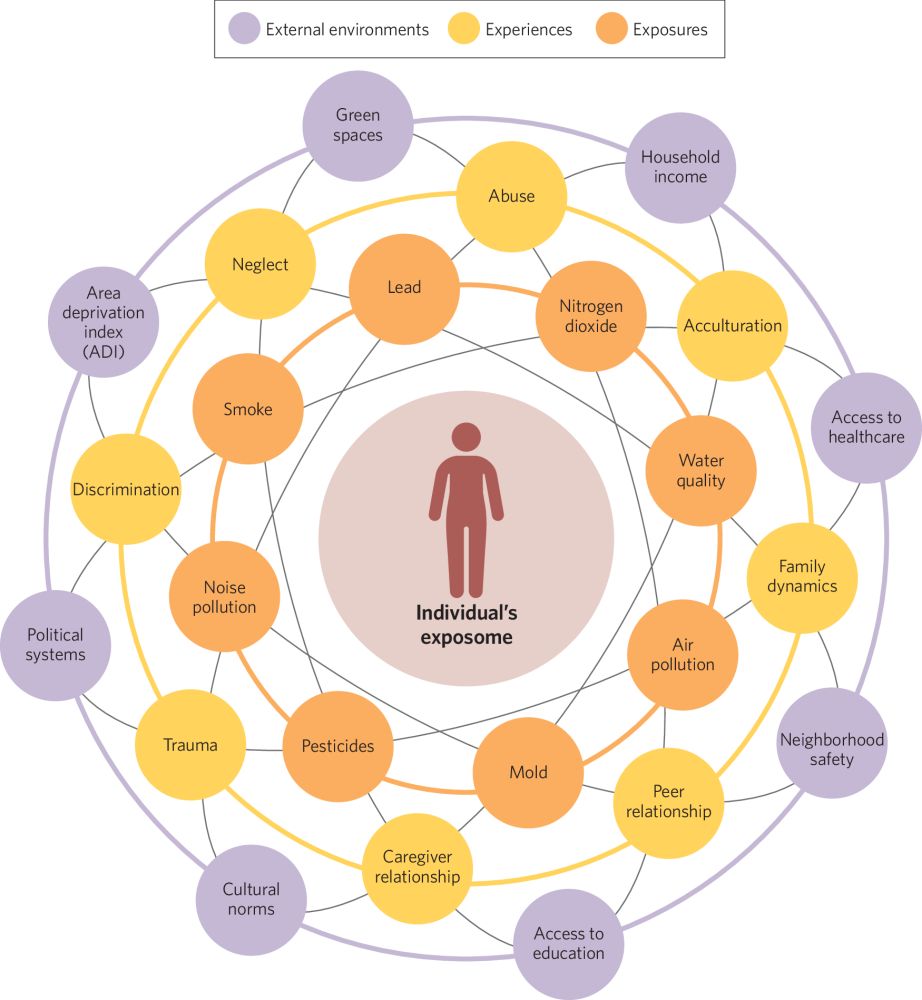
The effect of the “exposome” on developmental brain health and cognitive outcomes
Neuropsychopharmacology - The effect of the “exposome” on developmental brain health and cognitive outcomes
Absolutely thrilled to share the 🌟 FIRST PAPER 🌟 from ACORN Lab! 🐿️ I’m beyond proud of all-star grad student @heatherarobinson.bsky.social for this review of “exposome” effects on neurodevelopment & cognition! Paper here rdcu.be/ezUqx & thread below 👇 /1
#neuroskyence #PsychSciSky #devsky #cogdev
08.08.2025 16:22 — 👍 68 🔁 32 💬 4 📌 1
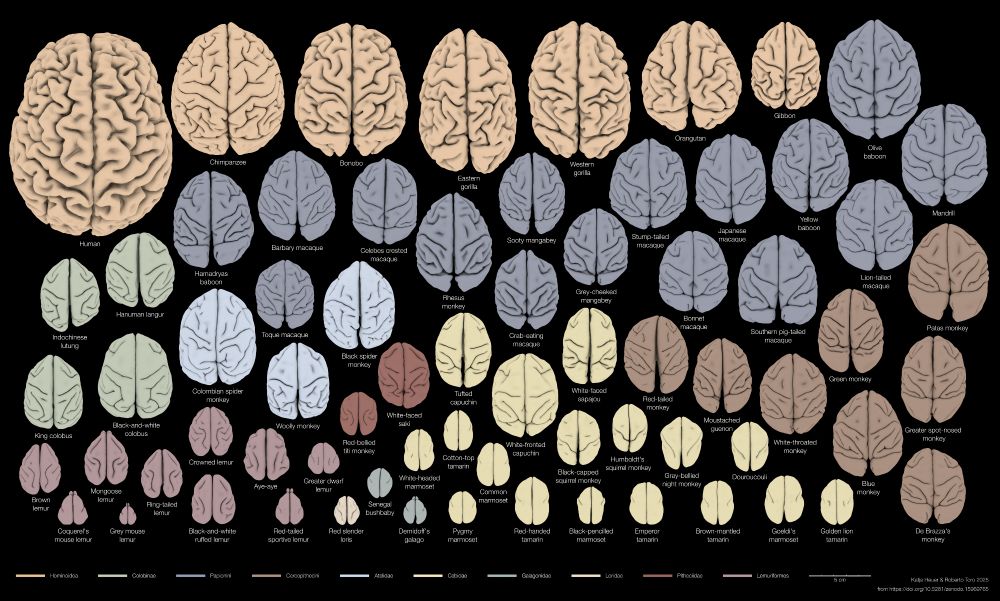
Brain Surfaces of 70 primate species
1
To predict the behaviour of a primate, would you rather base your guess on a closely related species or one with a similar brain shape? We looked at brains & behaviours of 70 species, you’ll be surprised!
🧵Thread on our new preprint with @r3rt0.bsky.social , doi.org/10.1101/2025...
27.07.2025 17:26 — 👍 495 🔁 225 💬 15 📌 26
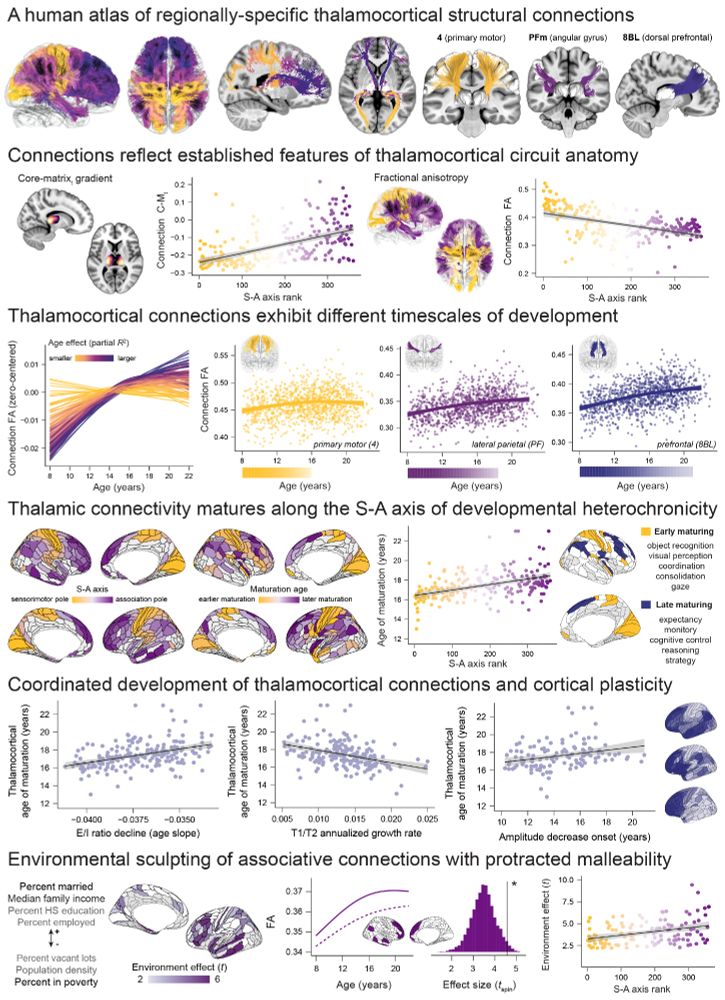
How does the human brain coordinate hierarchical cortical development? Our work in Nature Neuroscience identifies a role for thalamocortical structural connectivity in the expression of hierarchical periods of cortical plasticity & environmental receptivity in youth 🧵 www.nature.com/articles/s41...
08.07.2025 00:00 — 👍 120 🔁 44 💬 4 📌 8
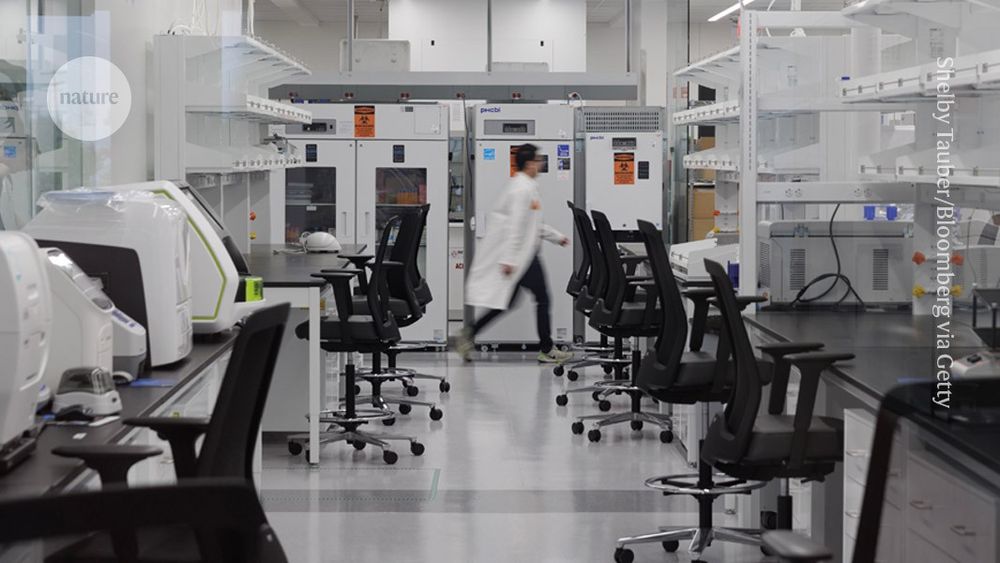
75% of US scientists who answered Nature poll consider leaving
More than 1,600 readers answered our poll; many said they were looking for jobs in Europe and Canada.
We polled Nature readers to ask if they were thinking of leaving the US for jobs abroad. Three-quarters of them (who said they were US-based scientists) said yes. 🧪
www.nature.com/articles/d41...
27.03.2025 14:19 — 👍 2343 🔁 1070 💬 66 📌 216
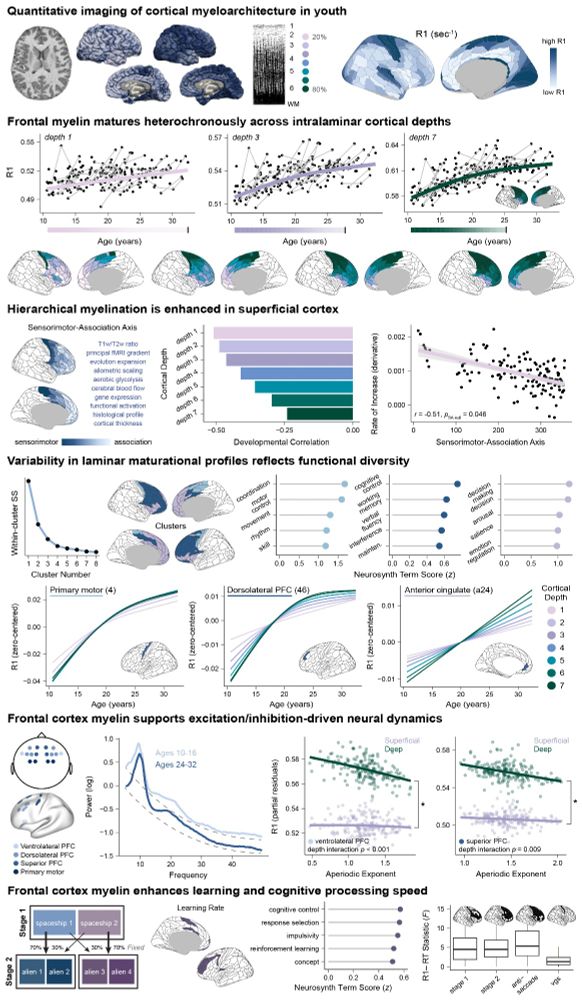
Cortical maturation unfolds hierarchically, endowing the PFC with extended plasticity. But do timeframes of plasticity vary across PFC layers?
With 7T quantitative myelin imaging, EEG, and cognitive data, we uncover heterochronous laminar maturation in the PFC 1/n. www.biorxiv.org/content/10.1...
07.02.2025 18:51 — 👍 128 🔁 45 💬 4 📌 5
SNAAP is an awesome resource for anyone interested in applying to PhD programs in neuro! They’re currently hosting mock interviews, info below👇
#neuroskyence @stanfordnapp.bsky.social
29.01.2025 04:57 — 👍 9 🔁 3 💬 0 📌 0
Careers | Human Resources
We're hiring a lab manager to start this summer in the @logicemotionlab.bsky.social! Submit CV, cover letter, and reference contact info by Feb 17th for priority review. Description of the lab's research focus, mission, and values are on our website! research-princeton.icims.com/jobs/20420/r...
27.01.2025 15:38 — 👍 23 🔁 28 💬 1 📌 2
Hi. I enjoy making science easier and improvisational theater.
Neuroinformagics : #python #OpenScience #Neuroscience ||| developer: http://compose.neurosynth.org
pronouns: he/him/his
PhD student @ University of Connecticut
@acornlab.bsky.social
Attention, development, mental health, personalized neuroscience 🧠
https://appliedcognitionlab.psychology.uconn.edu
Applied Cognition & Personalized Neuroscience Lab @ UConn
PI: Arielle Keller @ariellekeller.bsky.social
attention, cognition, mental health, development, environment, personalized neuroscience
appliedcognitionlab.psychology.uconn.edu
Multiscale Neuroscience
Associate Prof @ Montreal Neurological Institute
work: http://mica-mni.mcgill.ca
pixels: @borismontreal
waves: https://soundcloud.com/heschls
Developmental Psychology PhD Student @ UNC-CH | Child & adolescent brain development 🧠, social media, risk-taking, mental health.
I study the evolution of human culture with a focus on environmental behaviors and institutions and an eye toward helping these become more sustainable on a single, limited planet. https://timwaring.info/
Clinical Science PhD Candidate @UMich studying how environmental experiences influence brain development and mental health
neurology resident @ UPMC, hobbyjogger
\\ interested in cognition, cerebrovascular disease, and movement disorders
🧠 mflounders.github.io
Mexicana 🇲🇽 👩🏽🔬🧠 active reader passive writer #LatinxInSTEM
PhD || neuroscience of emotions in Bielefeld || artist in Dortmund || birds
AACAP is the leading national medical association dedicated to treating children and families affected by childhood and adolescent mental illnesses. Follow/RT ≠ endorsement.
Neuroscientist examining stress-control neural circuitry, childhood adversity and mental health.
(she/her). Postdoc at Pitt. Clinical psychologist. Autism, repetitive behaviors, emotion (dys)regulation, self-injury 🧠. Views mine.
Assistant professor of Psychiatry and Bioengineering at University of Pittsburgh
JAMA Psychiatry is a member of the JAMA Network, a consortium of peer-reviewed, general medical and specialty publications.
🌐 JAMAPsychiatry.com
Pitt Psychiatry provides superb behavioral health services, innovative research & outstanding training. Named a US News & World Report Best Psychiatry Program | psychiatry.pitt.edu
PhD student at Max Planck School of Cognition
VP Research & Innovation, University College Cork @ucc.ie @uccresearch.bsky.social |PI @apcmicrobiomeirel.bsky.social |Prof Dept. Anatomy & Neuroscience |MRIA @ria.ie|
Stress, Microbiota-Gut-Brain Axis, Brain-Body Interactions, Research Policy
We're a neuroscience blog trying to make neuroscience accessible for everyone! Check it out here: https://neurofrontiers.blog
Reader in Developmental Psychopathology at the University of Bath.
Family-based Intervention for Child and Adolescent Mental Health textbook out now: http://cambridge.org/9781108706063







